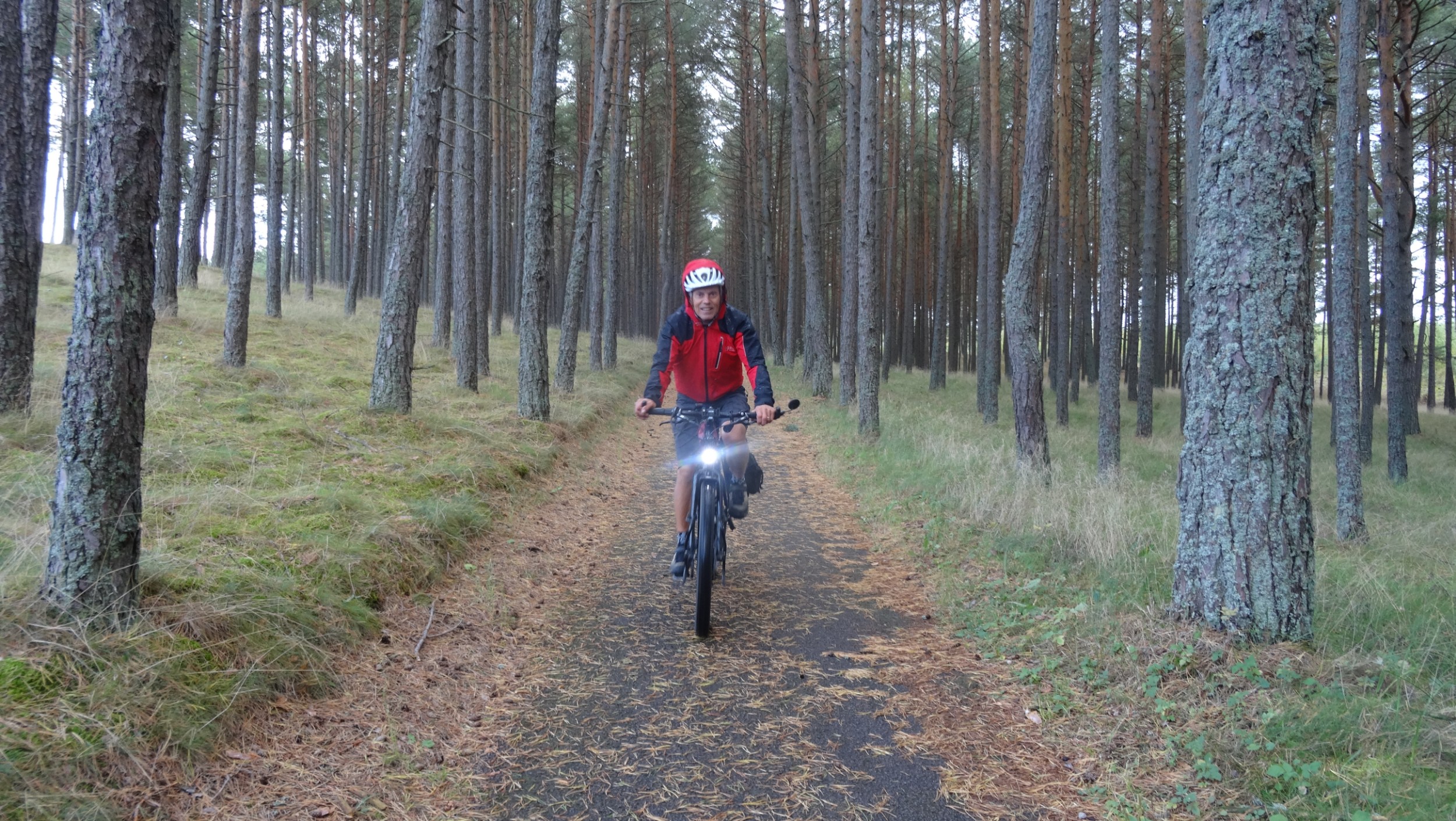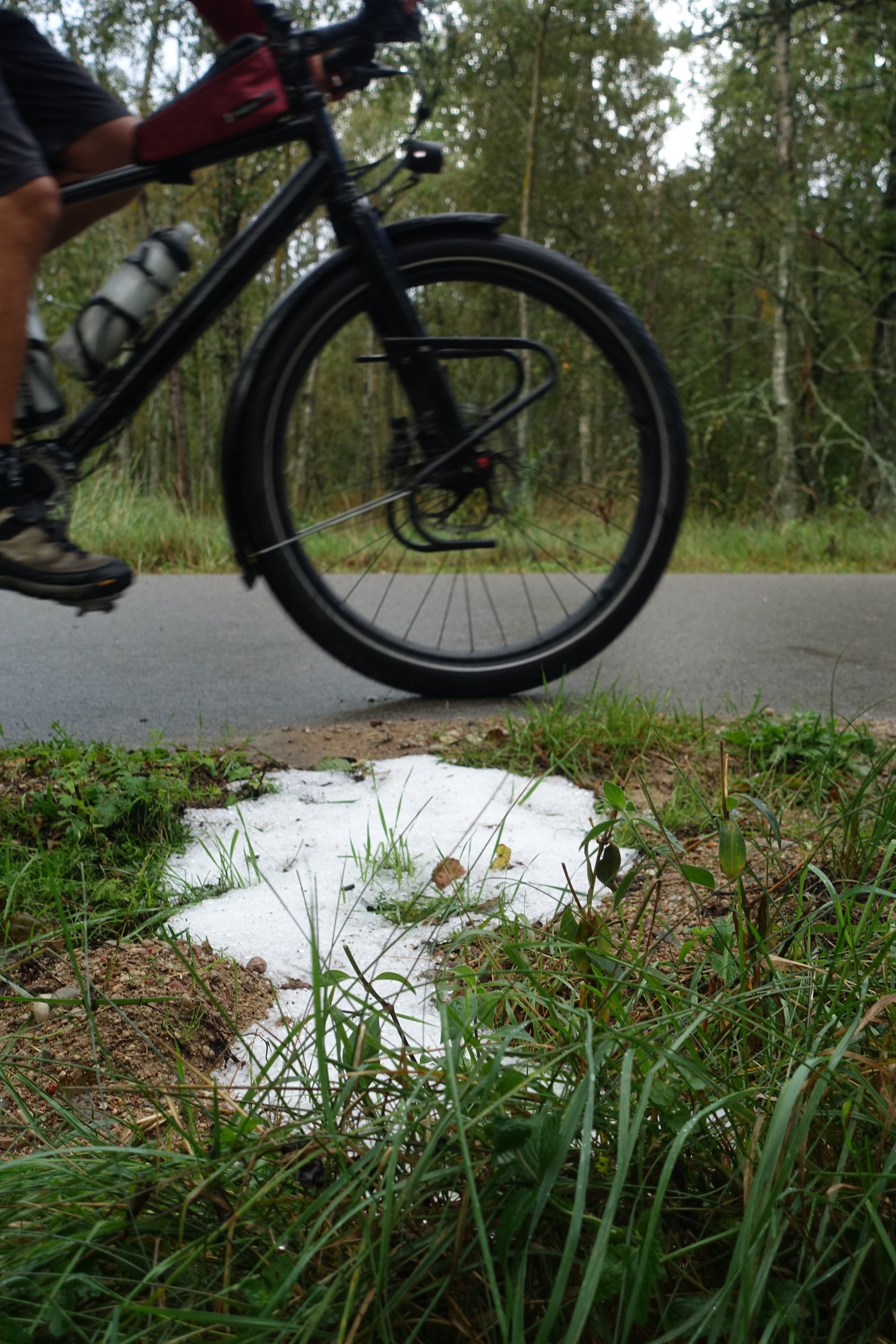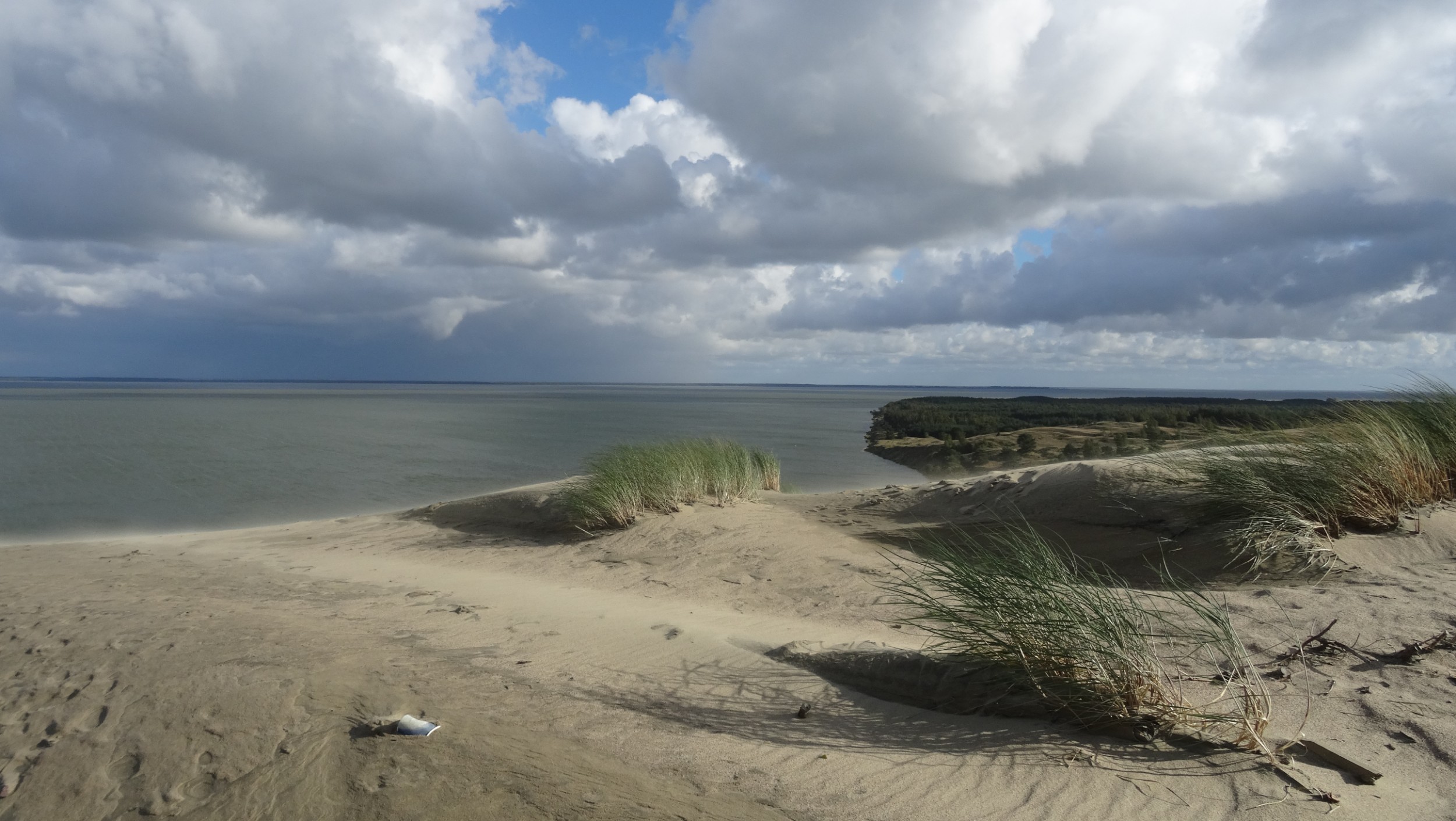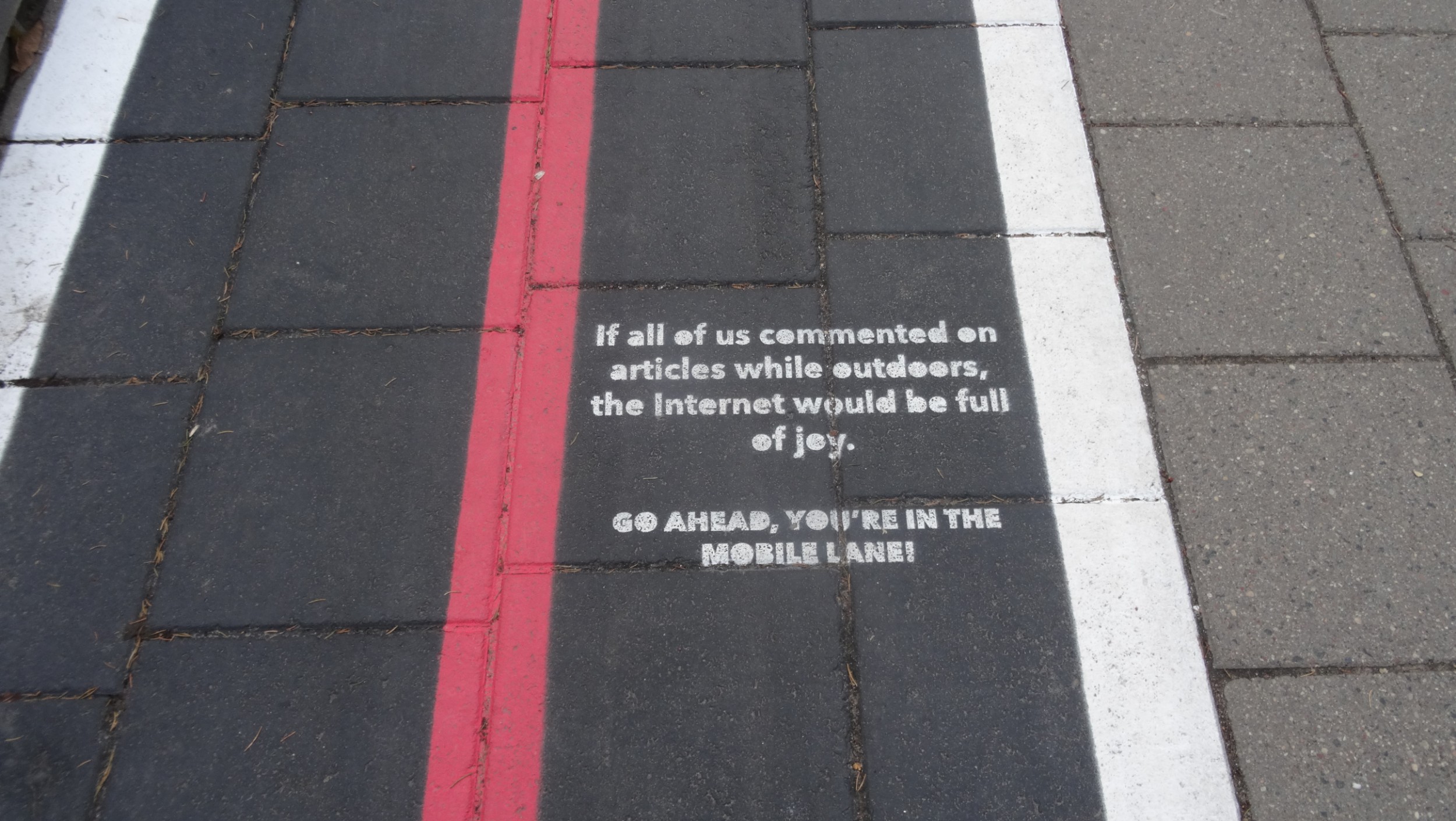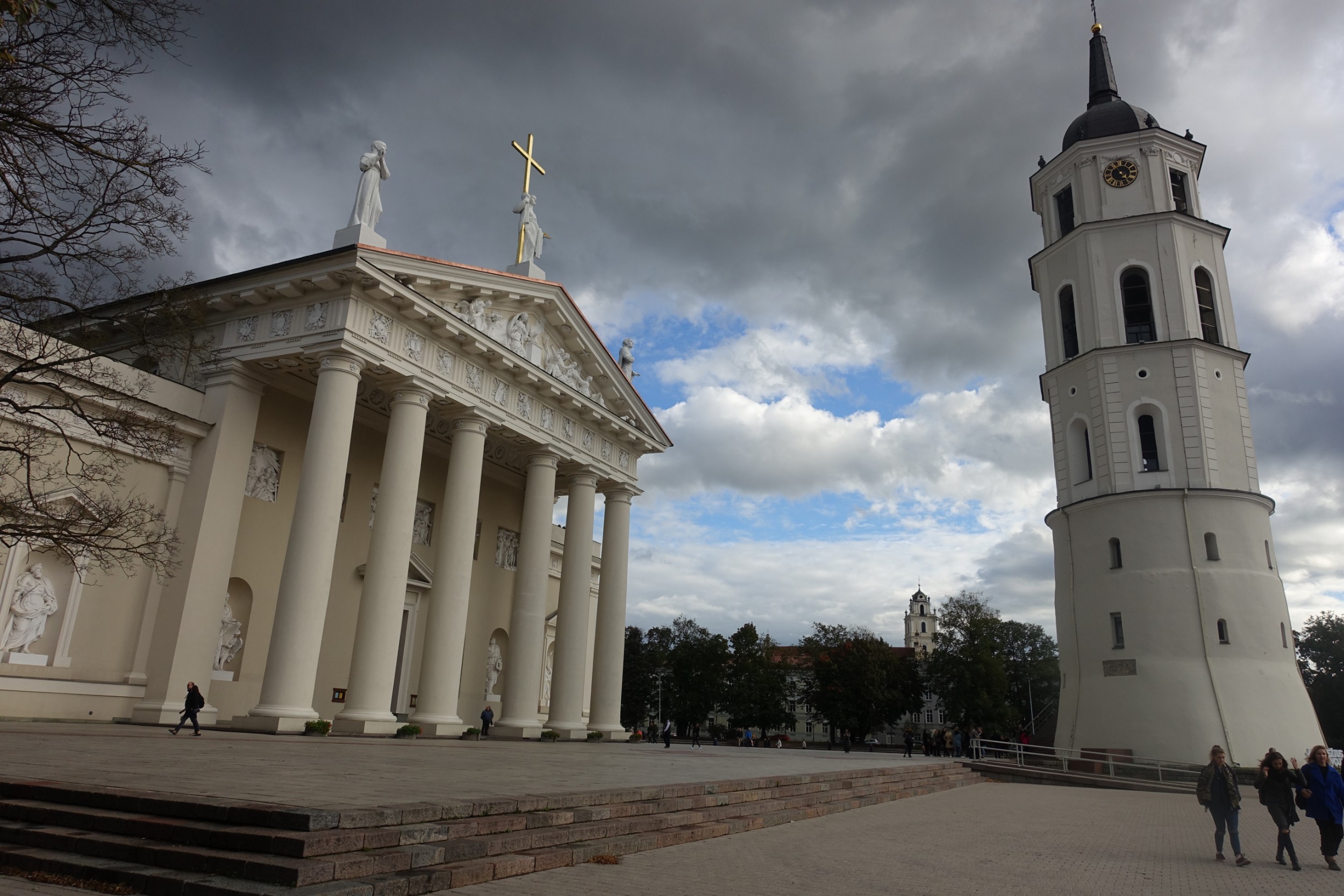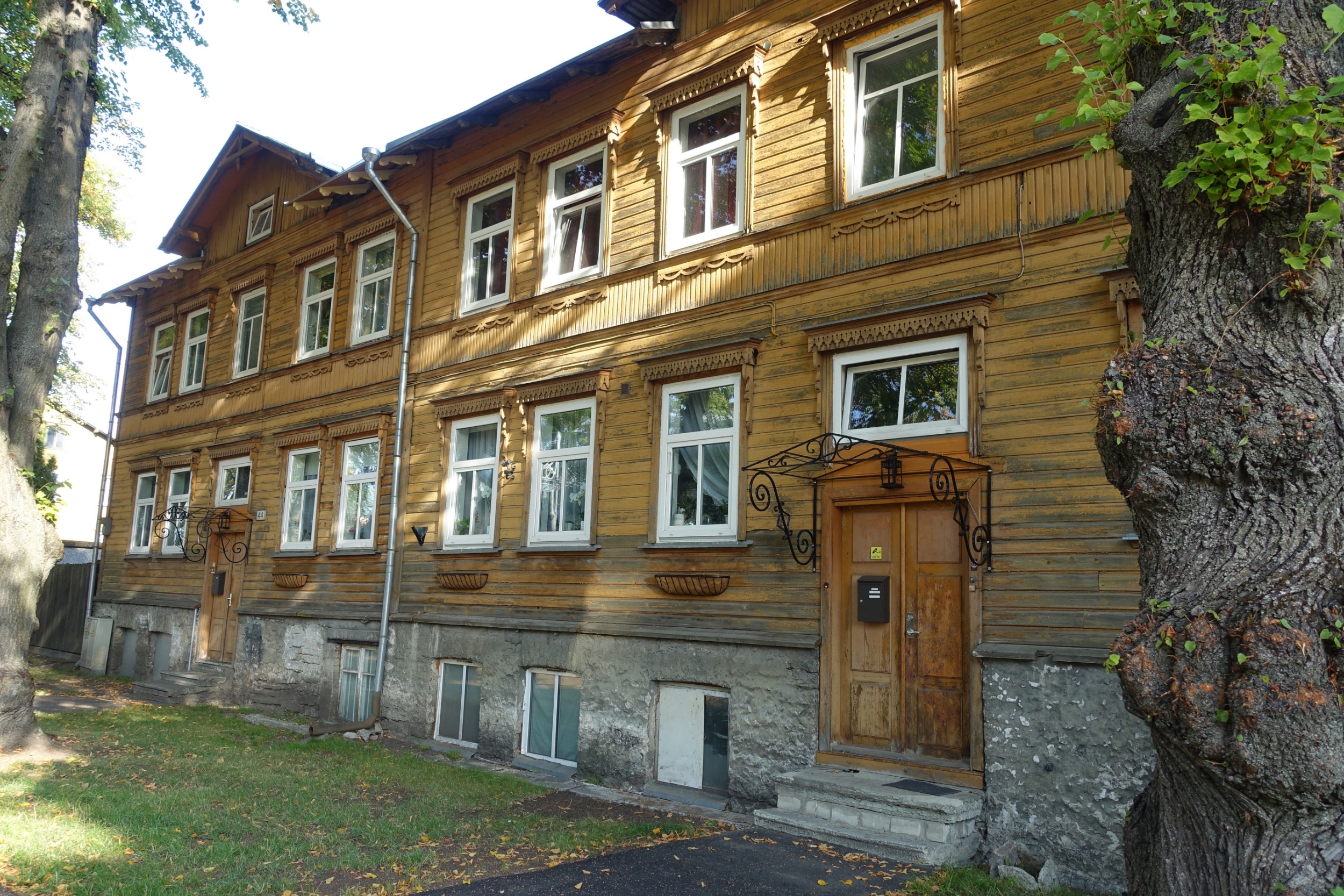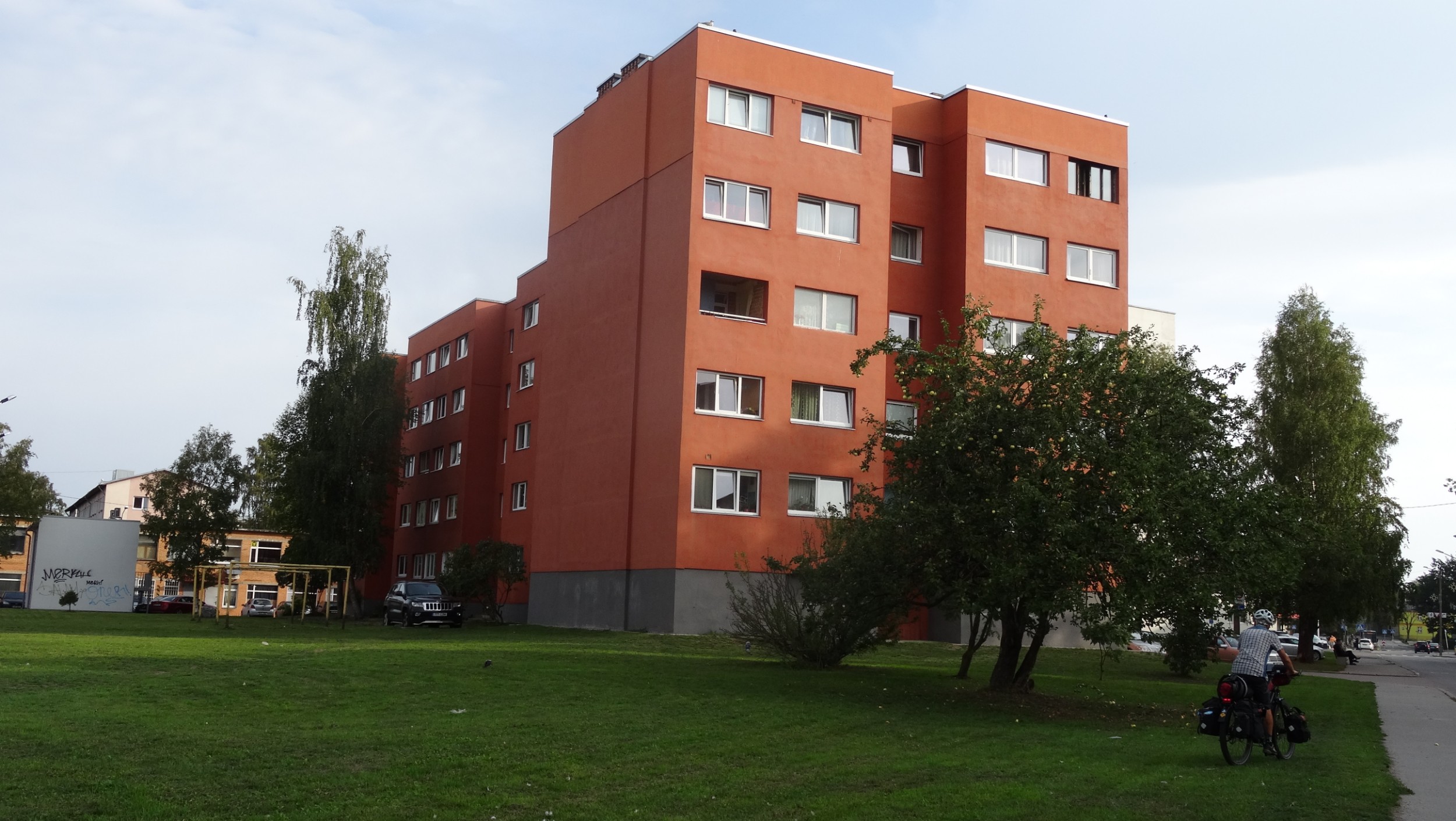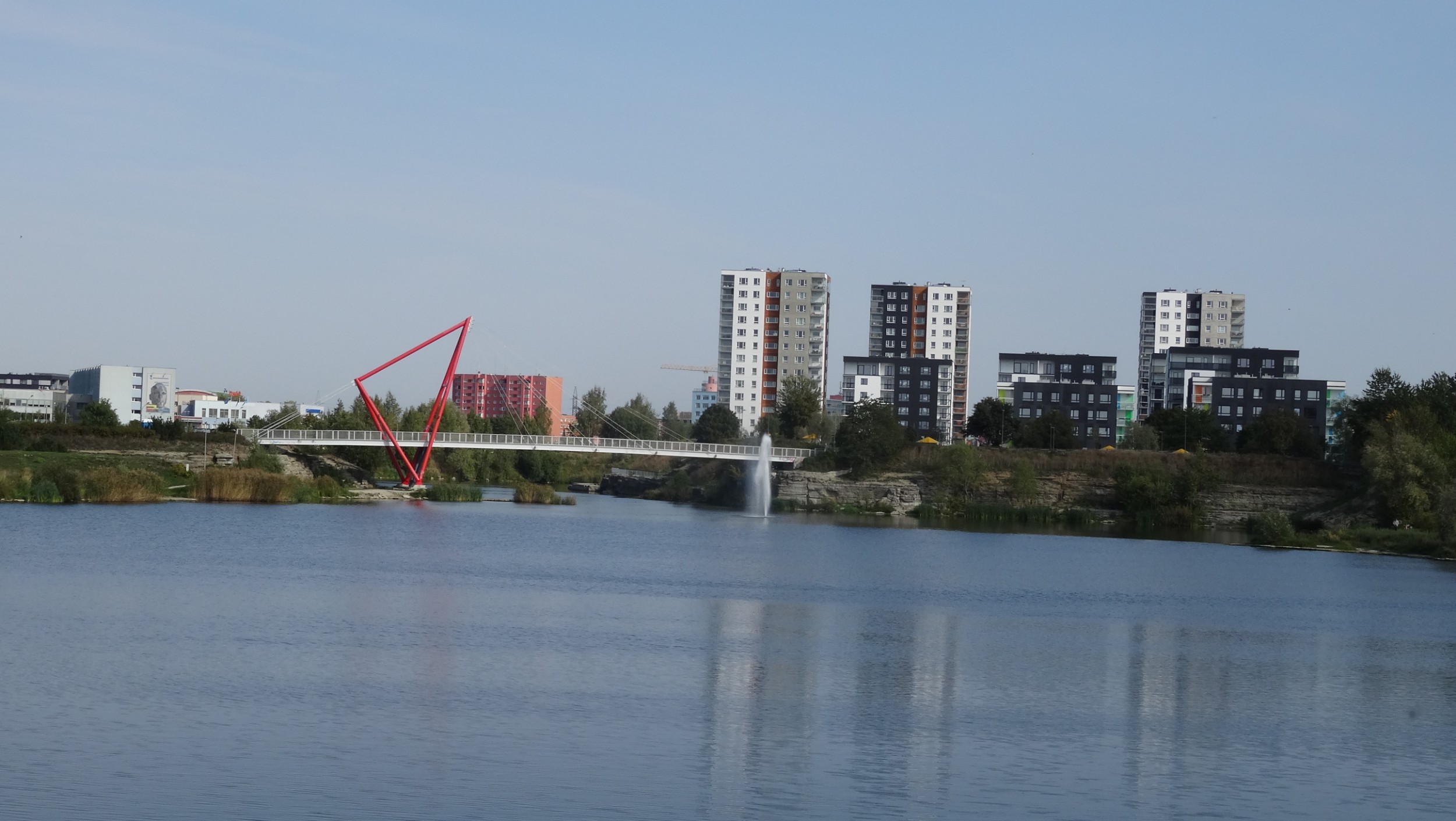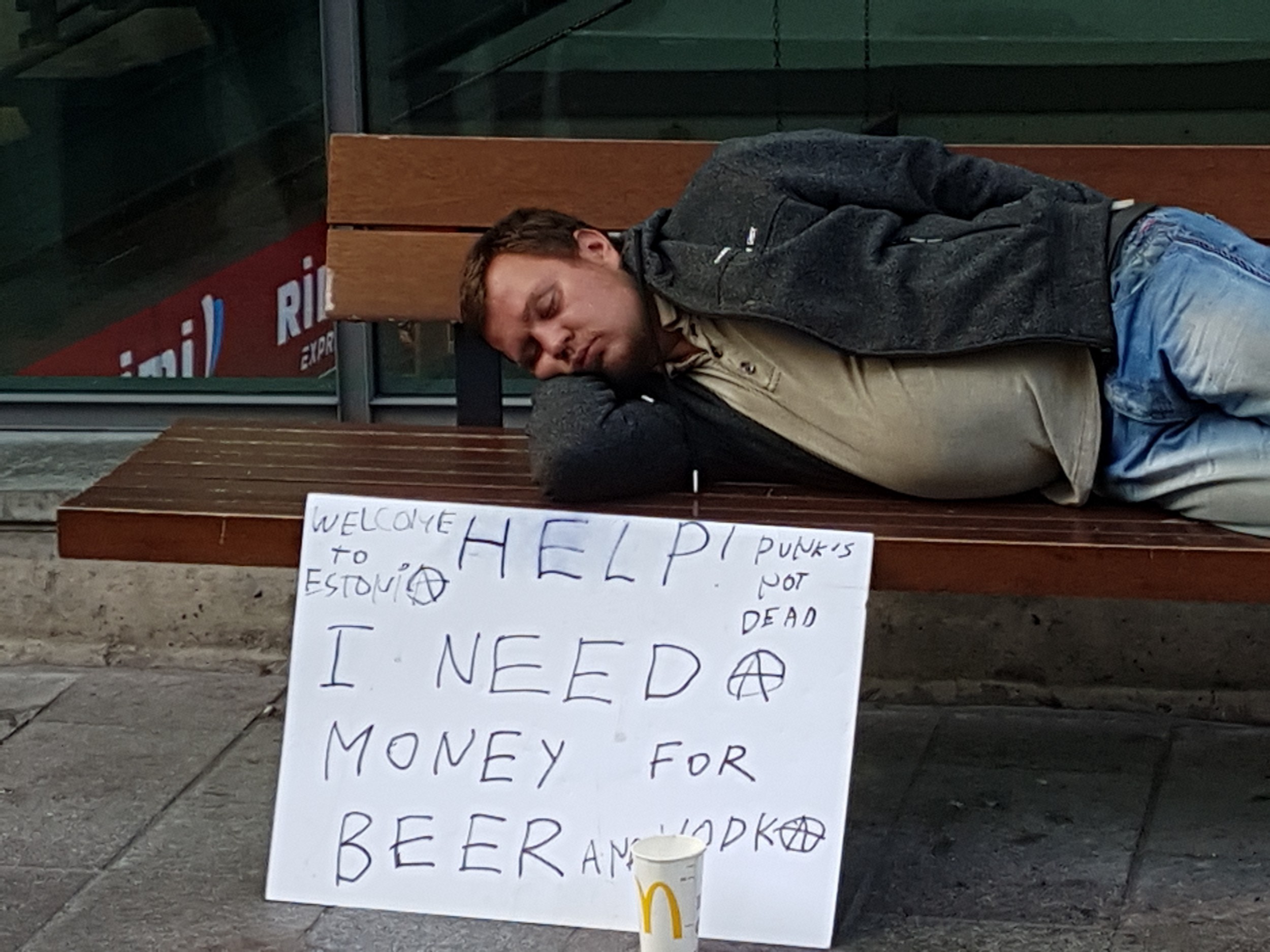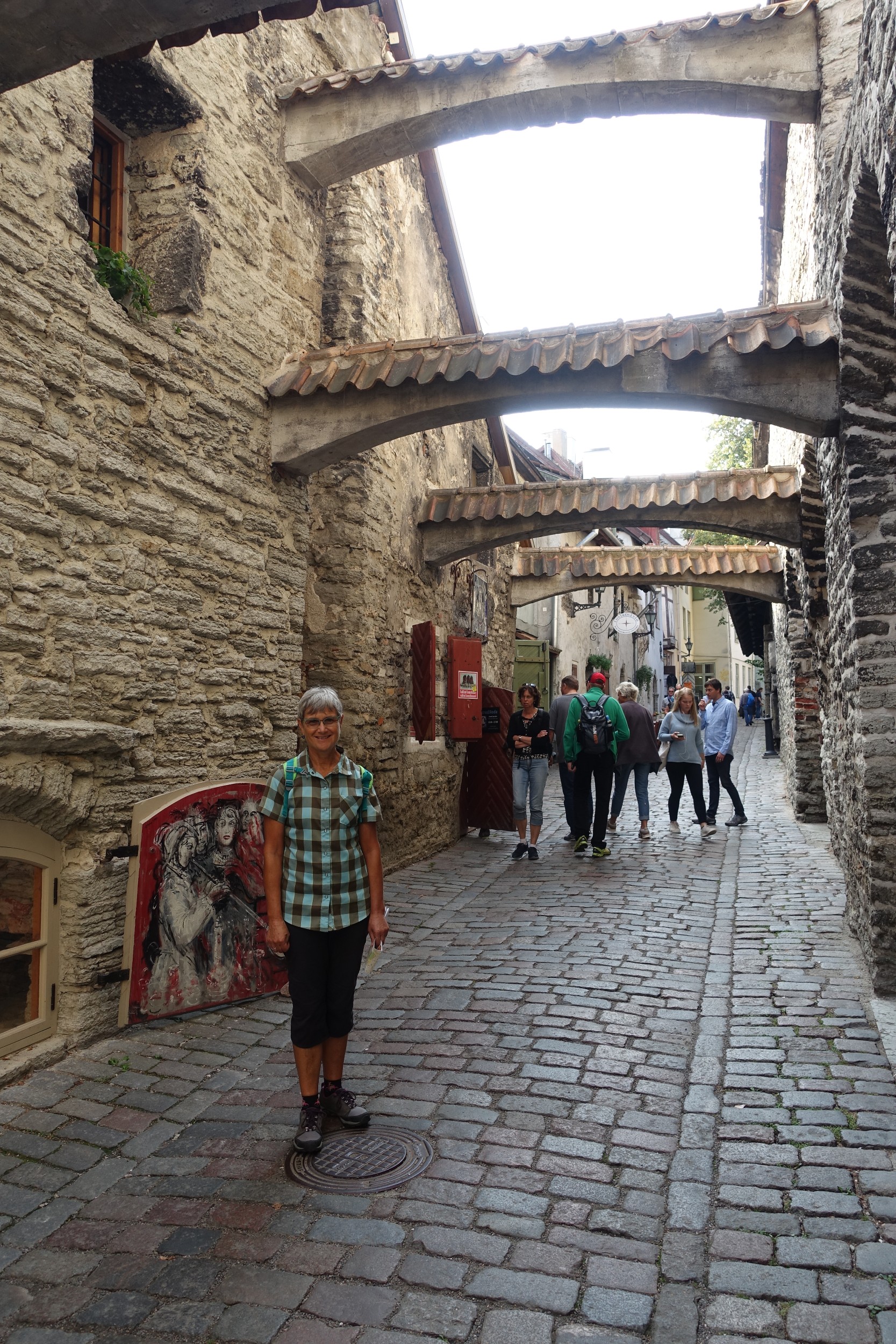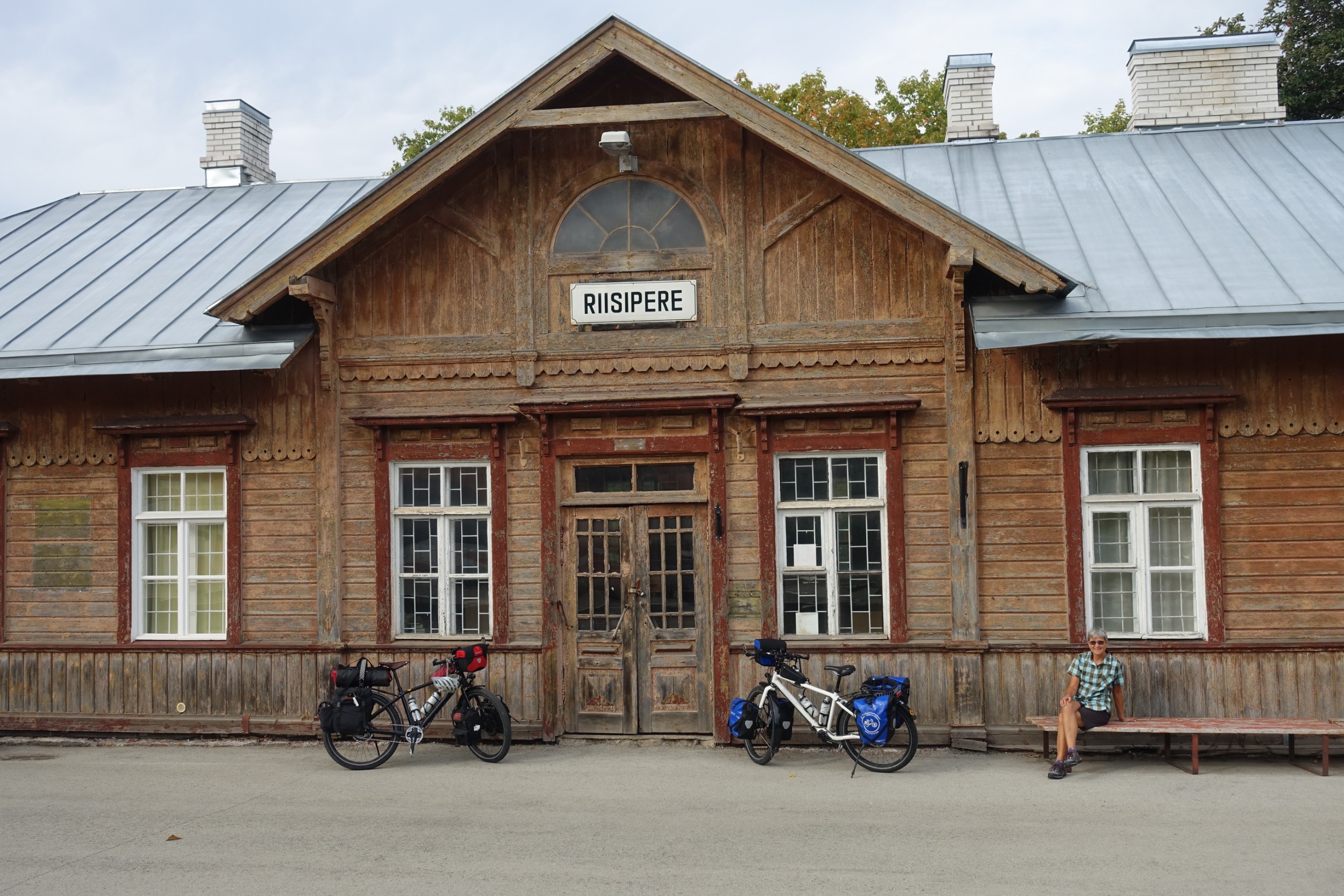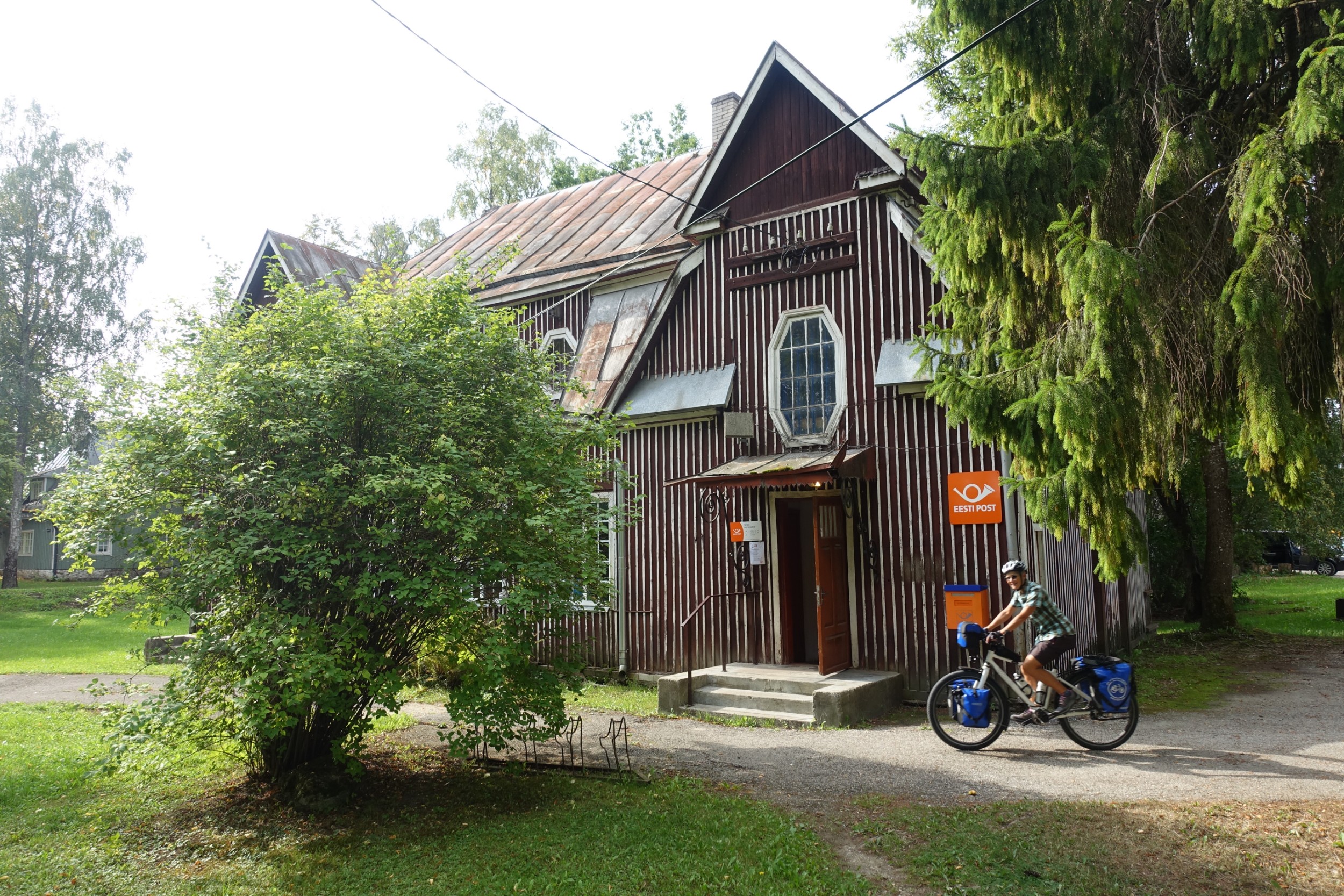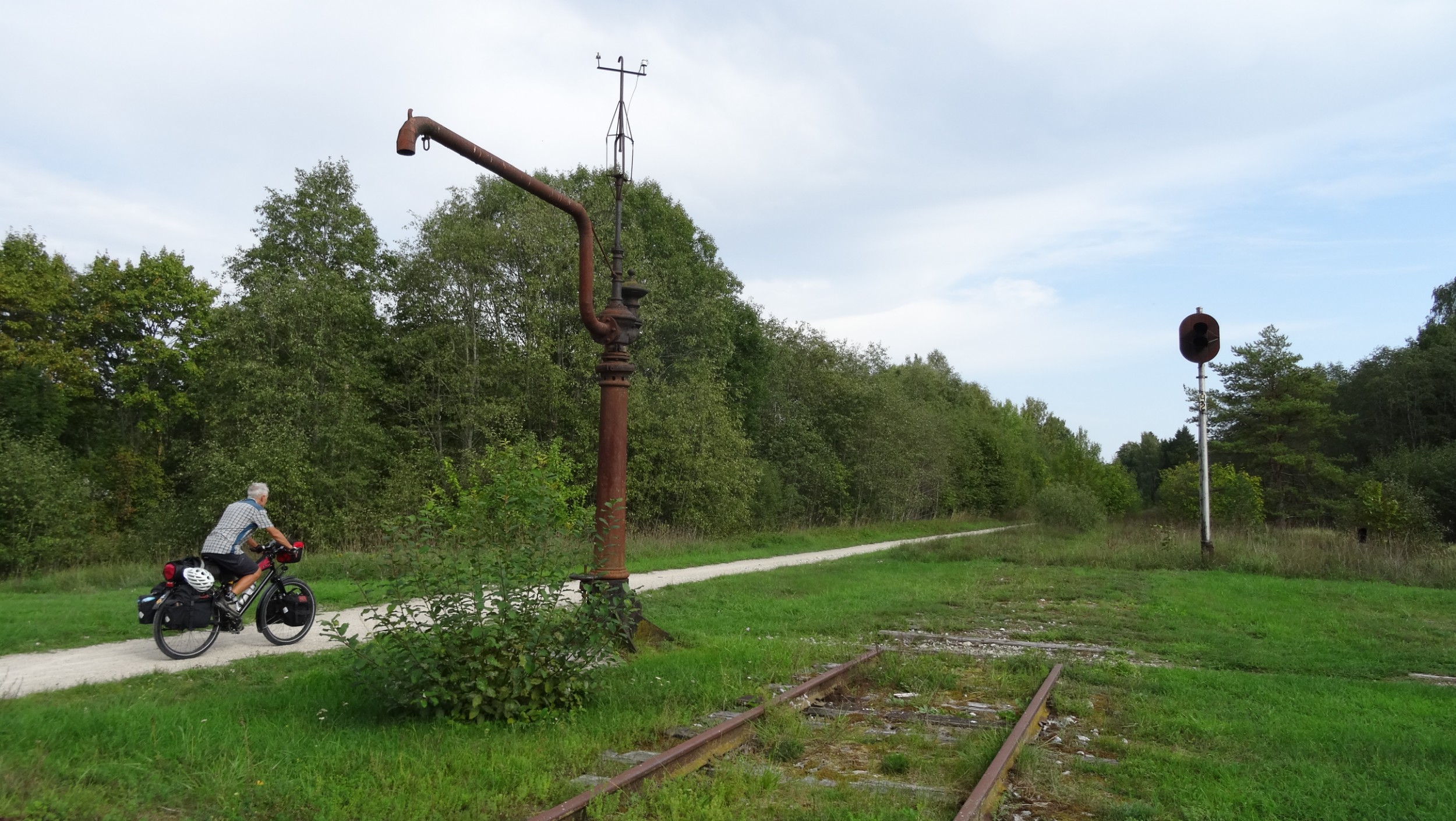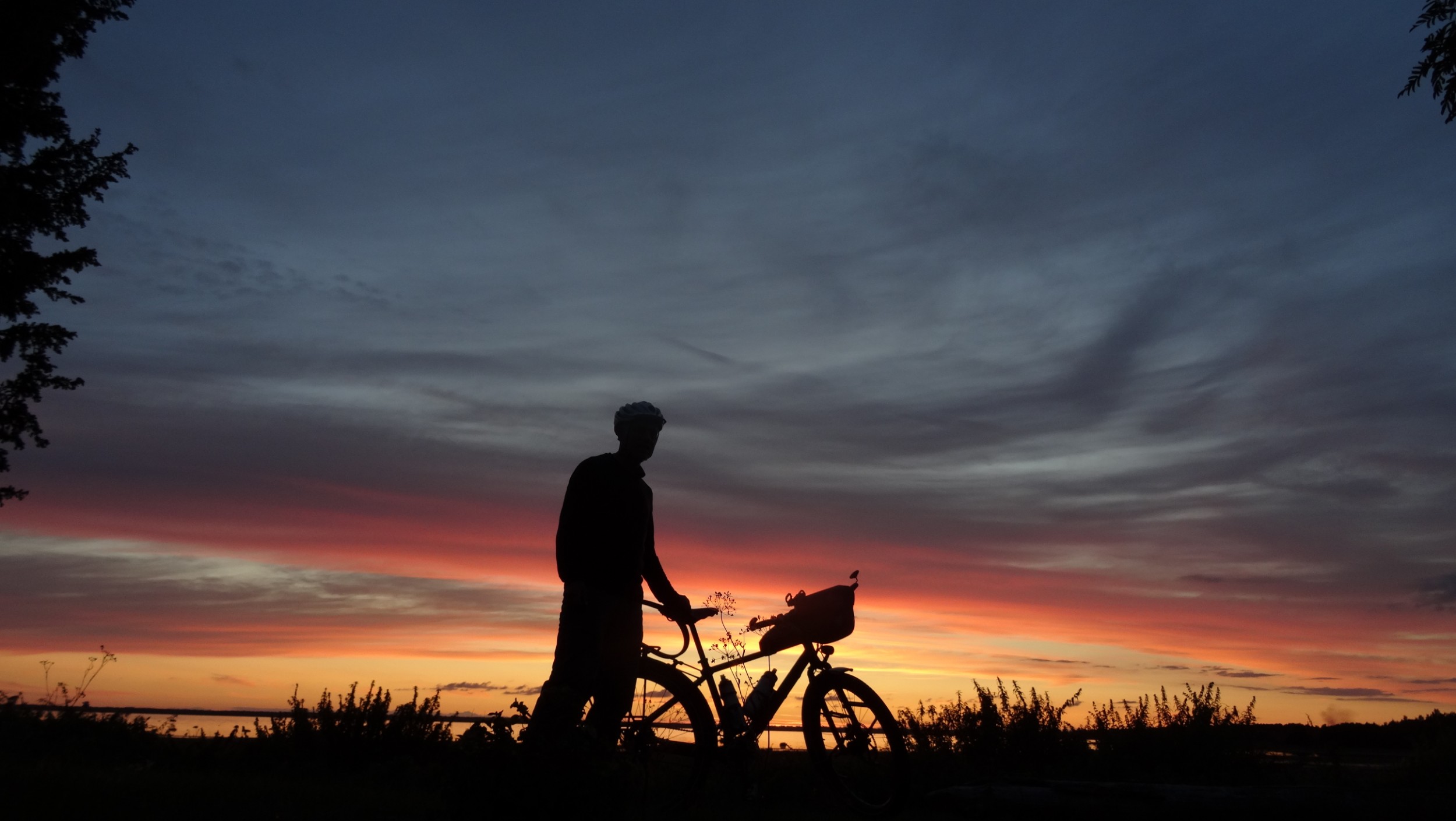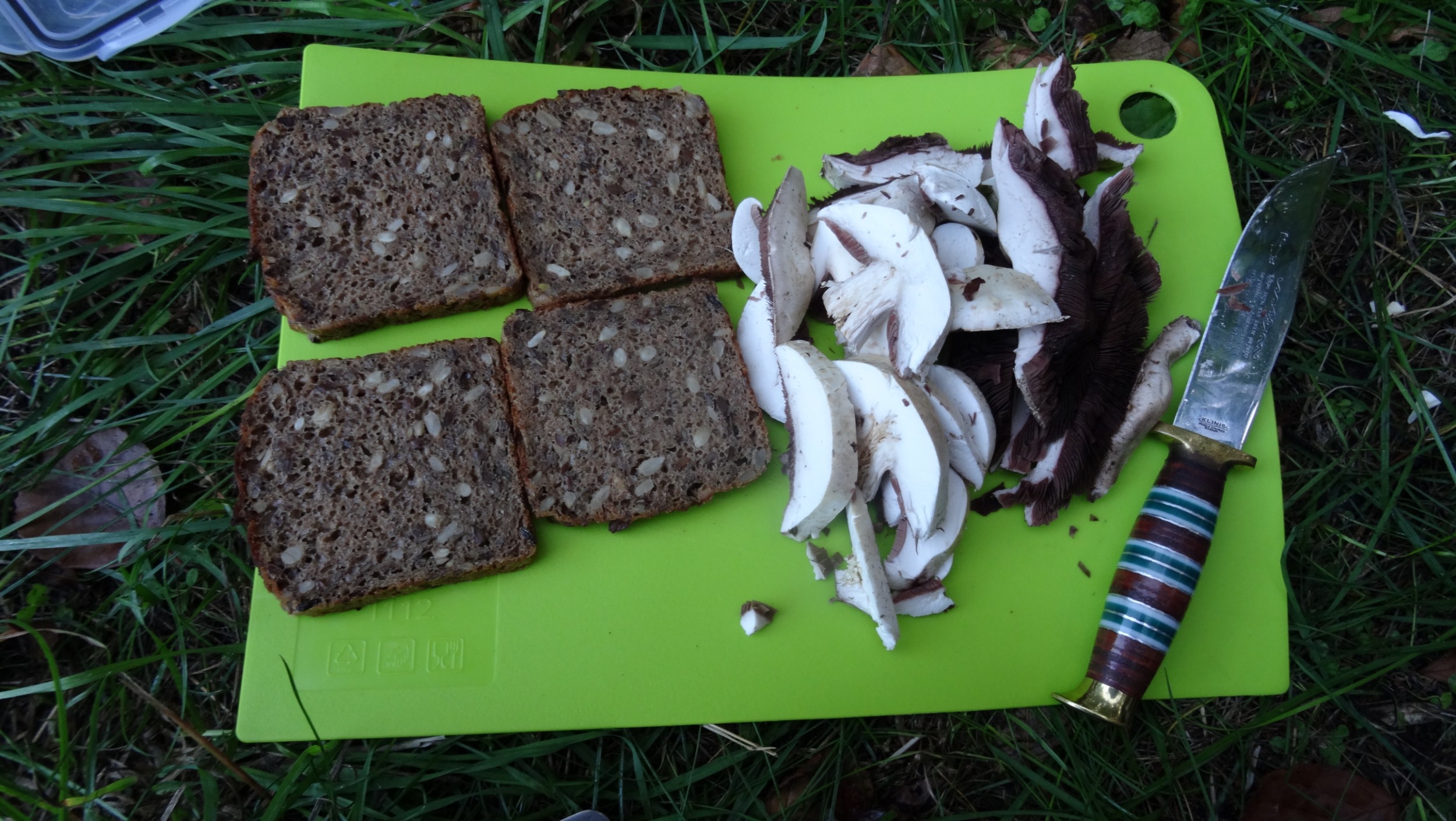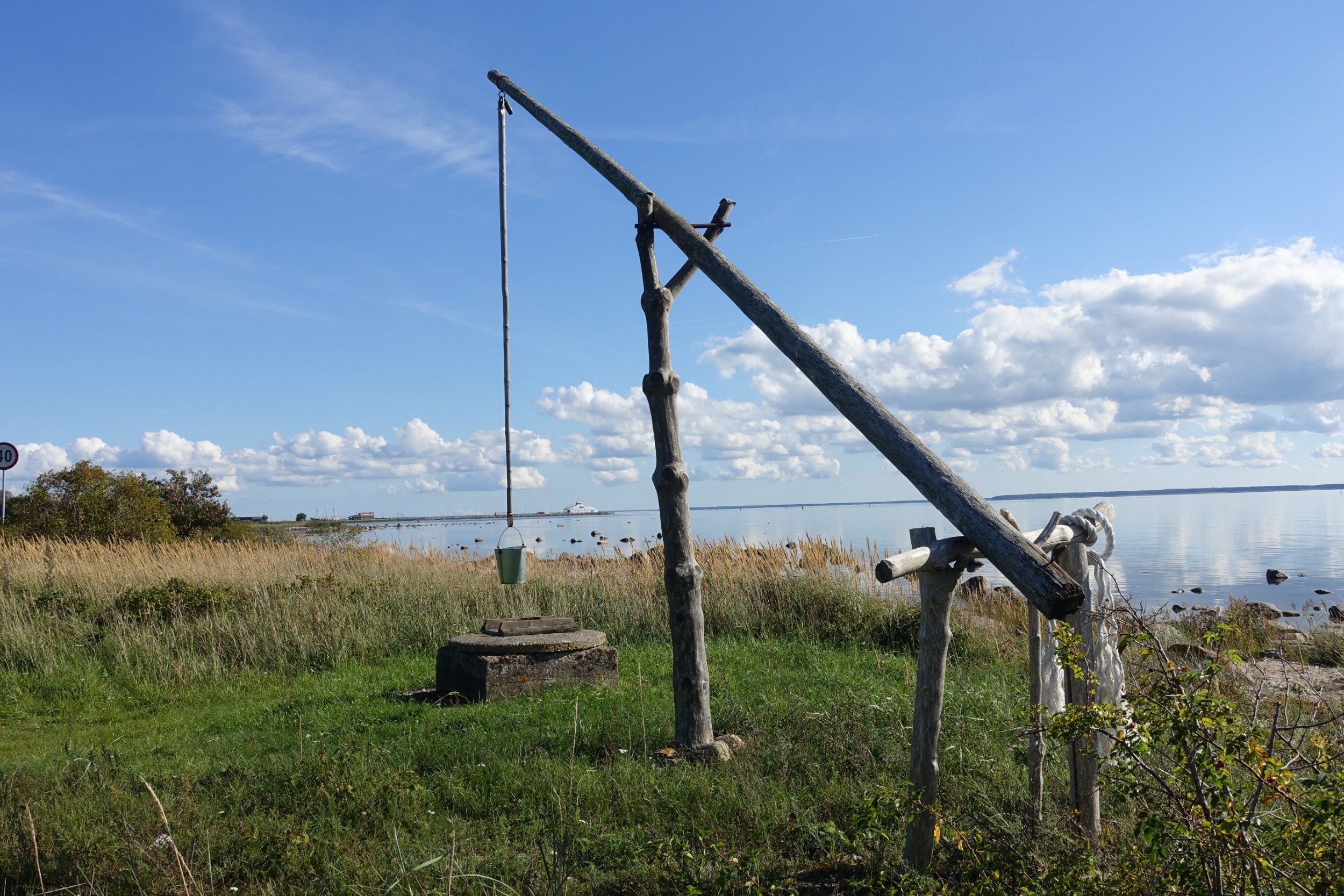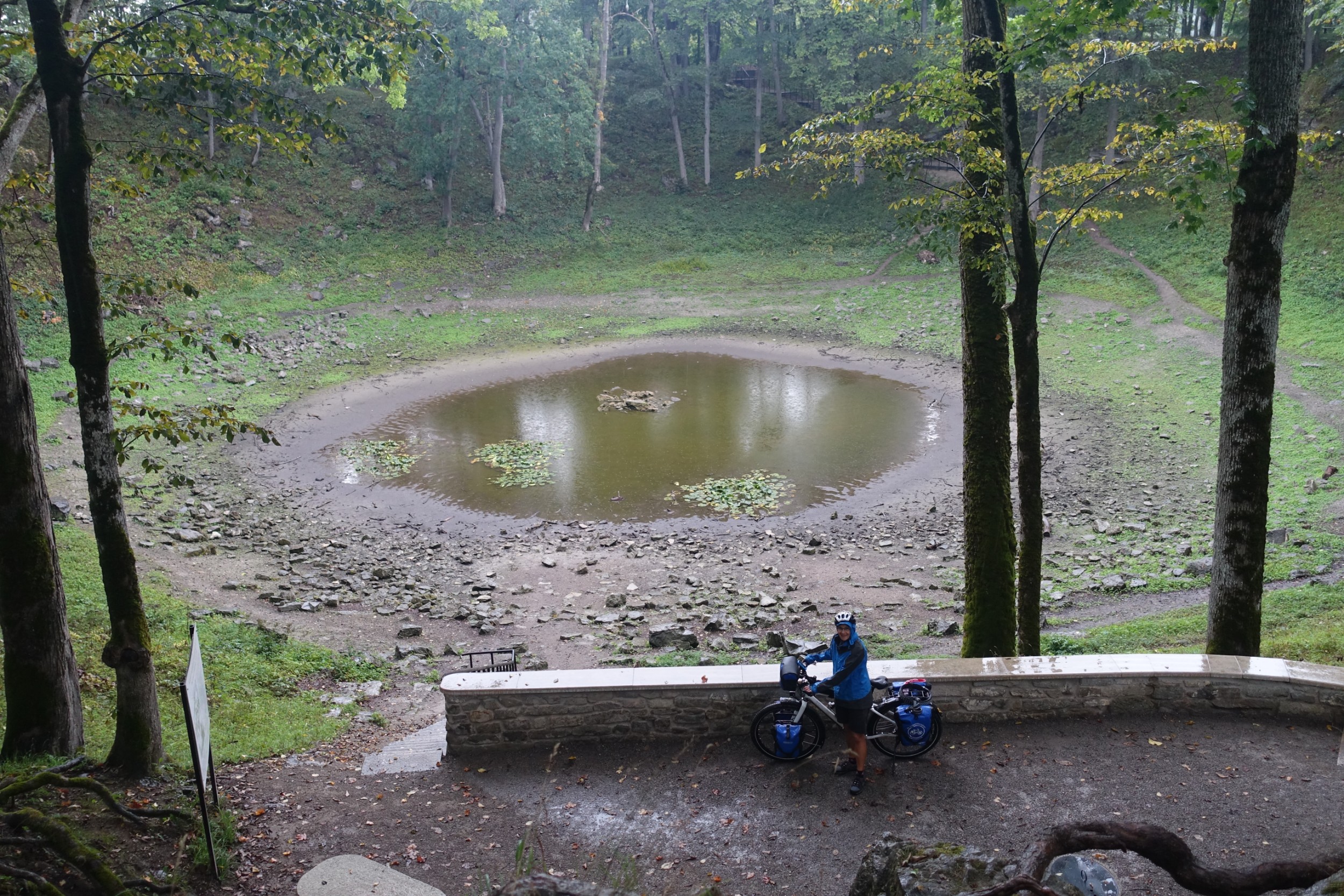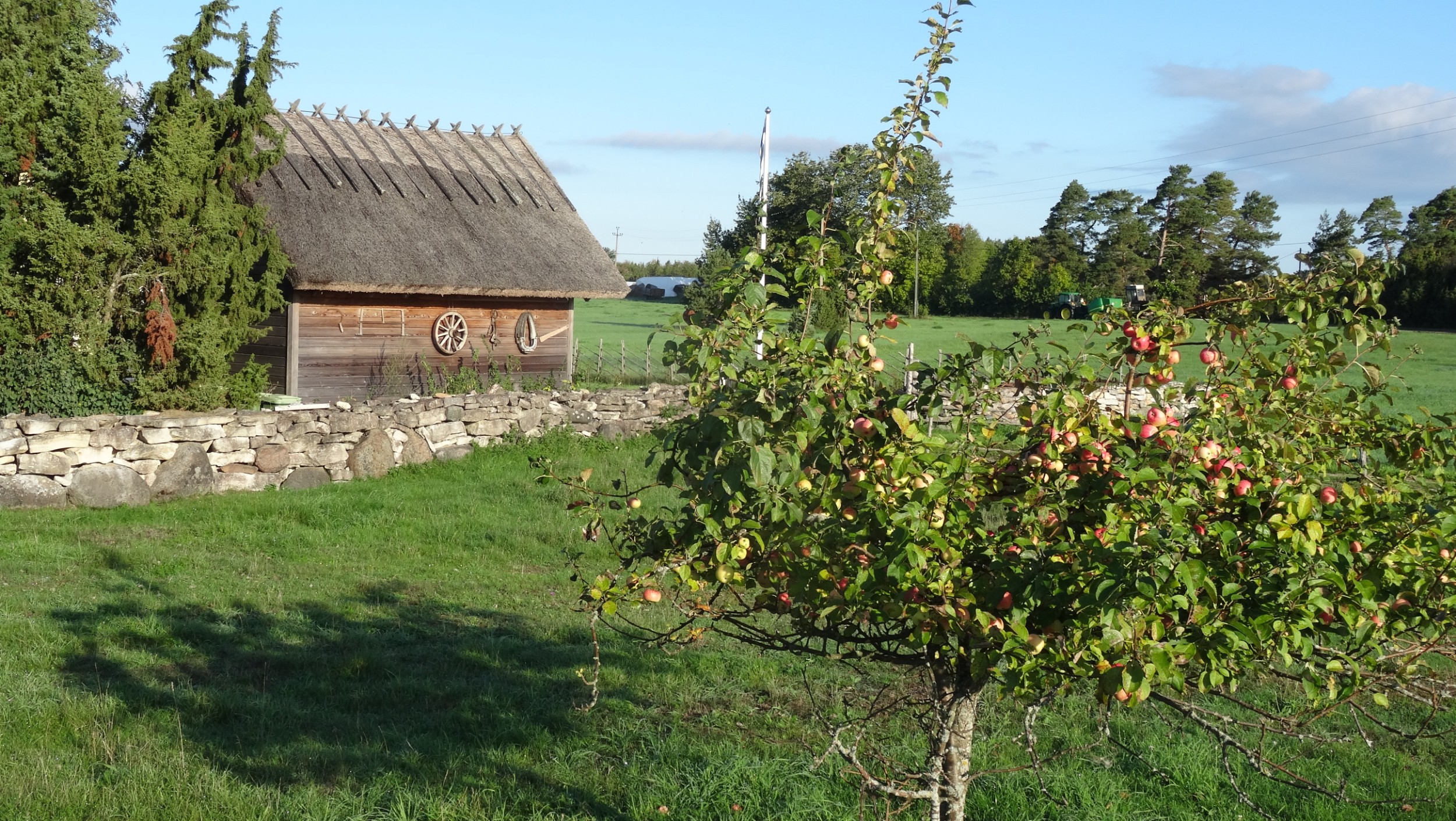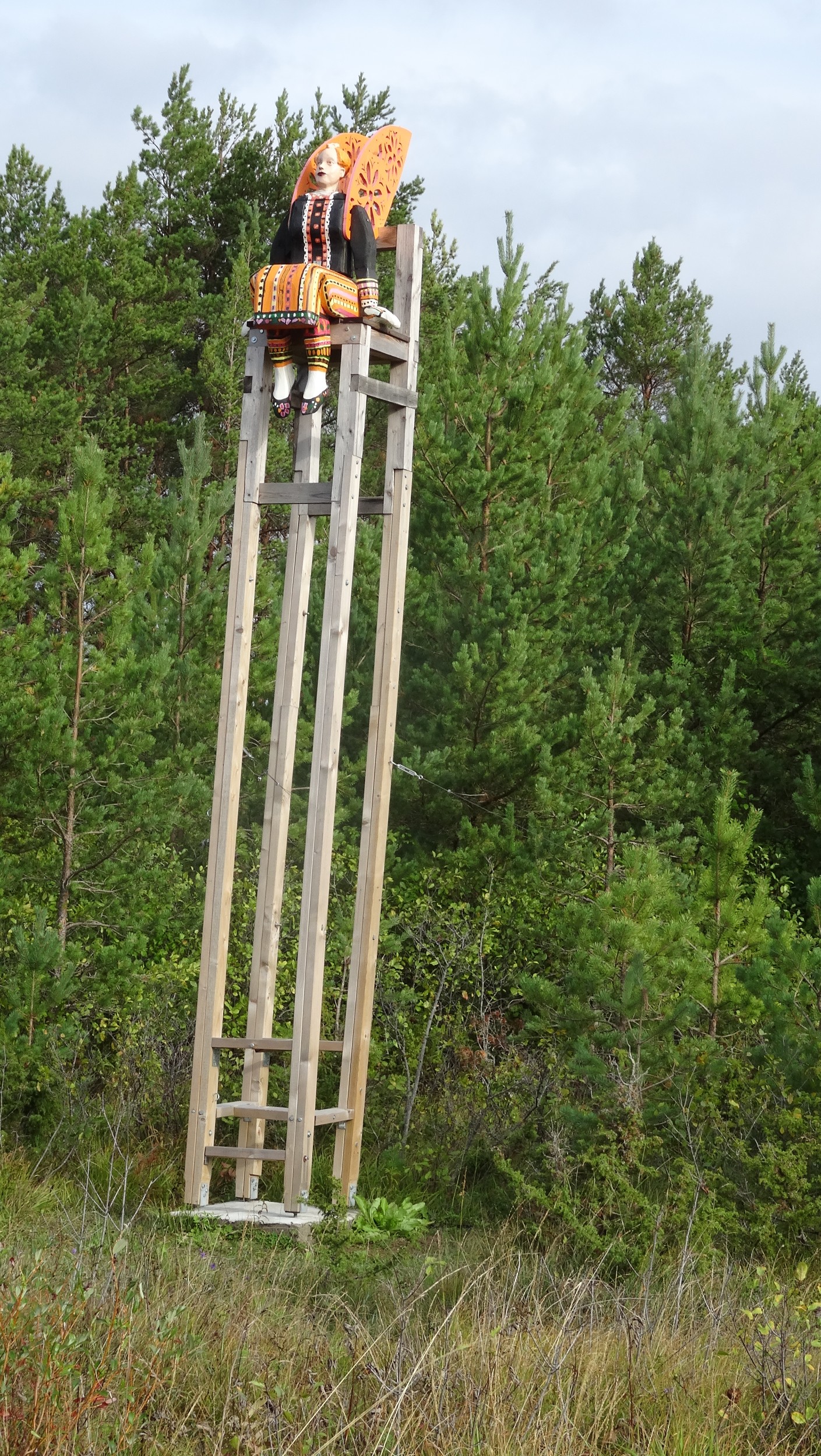Eastern Europe: Lithuania
Louise George
Sculpture park in Kaunas
Coming from Latvia, (you can read my Latvia blog here) right on the border is a small Bar. We are excited to see it, as we are both out of water. We stop for a soft-drink and a reprieve from battling the wind. Back on the bikes, the road appears to have narrowed a little, but we are now hemmed in by tall forests either side, and the wind doesn’t seem so bad for the remaining distance we have to Palanga.
Latvia / Lithuania border
At Palanga we stock up on groceries, and cook in the shared kitchen at our accommodation. Rain falls throughout the night.
It´s still raining when we wake, but at least it’s dry when we leave our room. We both agree there is nothing worse than starting in rain. If it comes later you just ‘get on with it’. Palanga is a thriving summer holiday destination for Lithuanians, but it’s now cool autumn, and very noticeable that the holiday season is over with the number of deserted restaurants along the pedestrian precinct, that leads up and over a sand hill to the beach where it’s howling wind.
From Palanga we have only 30 kilometres to get us to Klaipeda and it’s a pretty ride, mostly sheltered, through forests on a bike trail. We stop to look at a small lake set up for bird watching and later at a blustery view-point looking out to Dutchmen Cap, where the wind is so strong it’s hard to stand up. Rain hits us at this point and stays with us to Klaipeda where we stay for two nights.
We’ve come to Klaipeda so that we can ride on the Curonian Spit, a 98 kilometre sand dune that separates the Curonian Lagoon from the Baltic Sea. The lagoon is a resting place for many migrating birds and the sand dune is a protected area. We catch the bus down to Nida, only four kilometres from the border of the Russian land of Kaliningrad. Nida is hit with a hail storm not long after we get off the bus.
Fortunately we are indoors having lunch at the time but the afternoon is cold and we keep our raincoats on for extra warmth. The spit has dedicated cycle trails, mostly through wooded areas. We take our time and include a walk out to the moving dunes, and later to the dead dunes. Time gets away on us and we realise we’ve still got about 28km of Trail to ride and the signpost beside us, shows that for vehicles it is about 8km shorter. We take the road option, only to find later that there are signs that bikes are not allowed on the road and there is no shoulder. There’s not much traffic so we chose to ignore the signs and race to the ferry. We arrive back at Klaipeda in darkness.
A few days ago we had spoken with a local cyclist who told us that most cycle tourers in the Baltic State ride from Germany on the EuroVelo Route and in the opposite direction to us. This would give them the advantage of tail winds. but we had chosen the most interesting route south by coming south-west. He said that there was nothing much between Klaipeda and Kaunas. We had the option of taking a train, but a transfer was involved, or a bus. We found that the bus had bike racks and was the quickest option so we loaded up and sat back and enjoyed a bus ride from Klaipeda to Kaunas.
Kaunas is a town that had a large river and a couple of hills and we were staying for two nights in the suburbs at the top of one of them. We had one day exploring on foot. The bike lane through the walking precinct was very impressive! The weather had turned cold and while our raincoats protected us from a couple of heavy rain showers, we were not warm. We walked for many kilometres that day and late afternoon went to a movie, (English with Lithuanian sub-titles) to sit somewhere warm and dry.
We are back on the bikes Kaunas, heading towards Vilnius, the capital of Lithuania. The morning was heavily overcast, but dry. We have booked accommodation about 50km away so with not too far to ride, this should be easy. As soon as we left the outer suburbs of Kaunas we were riding firm packed sandy forest roads. It was nice to be away from traffic and to just focus on dodging the occasional pot-hole. The scenery was typical of what we had seen throughout Lithuania. Occasionally we came across people foraging for forest mushrooms, and we had seen many different varieties available at the markets and on menus. Occasionally we came across ´Cross-Craft´; that is a centuries old artistic tradition, expressing the Christian faith, through remembering the dead, expressing gratitude, or repentance; and styles were unique to different areas. We continued to pass by thousands of homes of the same style pictured here, in both towns and in the country-side; some were made of wood but many were made of whitish-grey brick. Towns we passed through were only a cluster of farm houses with no services, so it was just as well I’d dropped into a supermarket for a couple of ‘marmalades’ (jam doughnuts) before leaving the Kaunas behind. These doughnuts were eaten roadside, washed down with water rather than the hot coffee we would have preferred. Lunch was pre-packaged sandwiches and vendor-machine coffee that was eaten at the kerb, outside the petrol station we purchased them from.
For the final 12 km of the day’s ride we went through the Regionalpark Kaunasser Meer, on tarmac to Ziezmariai. Often with a tail wind we moved along quickly. It was threatening rain on our approach to Ziezmariai and we were keen to get to our accommodation without a drenching. Alas it was not meant to be. Google had taken us to a street of the name Parko g. in Kaisiadorys but this was rows of apartment blocks and nothing like the picture of our accommodation, nor was there a lake that the building was supposed to face! We dropped into a shopping centre to escape the rain and get our bearings, only to find we should be at Parko g. in Stasiunai, 6 km away. We knew we wouldn’t have kitchen facilities but had decided to get supplies that we could cook outside, on our stove; with the hope that there’d be enough gas for one lastcook up! Finally we made it to Dalyios Sodyba, wet and cold. A man turned up and showed us to our room then kindly opened a nearby lodge for us to use the commercial kitchen facilities.
Our last day cycling in Europe! The day dawned dry, at least only the ground was wet from a recent shower. Knowing we only had about 60 kilometres to ride, followed by a number of days off the bikes was a positive. Another boost occurred as we rode through the countryside. A young man out walking, called “marvellous” and “beautiful” accompanied by applause, and that brought a grin to our faces. Today the entire ride was a pleasure; there was farmland, forest and marshlands with many lakes that are sanctuaries for migratory birds, but none present at the moment. There were many hills that added exertion, as well as interest. What goes up, must come down and instead of free-wheeling we wound the gears up to the top of 18 and tried to see what we could get for maximum speed. Nev got 52kph and I got just under 51kph. Goes to show how much we trust these loaded idworx bikes; good speeds and not even a shimmer!
We stopped at Trakai that has a 14th Century castle fortress on an island in Lake Galve. We found the day’s temperature very cold and having already been inside of, and climbed many castle towers over our travels, decided it was more important to warm up by having a solid lunch of hot soup and Lithuanian potato dumplings; potato similar to a mash texture, filled with something similar to a meat patty, deep fried and covered in a sauce such as mushroom.
Warmed from within we had a brisk walk around the castle and then rode the lake shore track to the railway station. To avoid entering a city on busy roads, we caught the train, the final 30 kilometres, to Vilnius, capital of Lithuania.
Vilnius would be our final European city. Our Schengen Visa is about to expire and we fly out in two days. We struck the jackpot with the apartment we booked. It was reasonably central and was the first one we’ve had with a separate bedroom. The little kitchen had everything we needed. We soon cluttered the lounge with cardboard bike boxes and drying laundry.
Vilnius has some hills, great for view-points, and every time we raised our eyes there was a new spire in sight. Vilnius is a city of churches and the different denominations, and different time periods have all produced beautiful architecture. The impressive St Anne’s Church remains much the same as when it was built 500 years ago. There is a beautiful Old Town to explore. A quaint area that was the Jewish Ghetto. Until World War 2, Vilnius had a Jewish population of 100,000 making up 45% of the population. There were over 110 Synagogues; now there is one remaining. Most of the communities were decimated and 90% of the Jewish population exterminated. There is a KGB museum here and other historic buildings that have been witness to years, recent, and in the ancient past, of turmoil and war. There is also a quirky ‘Republic Uzupio’ an artistic community by the river, as well as cosmopolitan suburbs and malls as you would expect in any modern city. We found Vilnius to be a delightful city in which to finish our Eastern Europe cycling tour.
Next stop Morocco (you can read our Morocco blog here).






